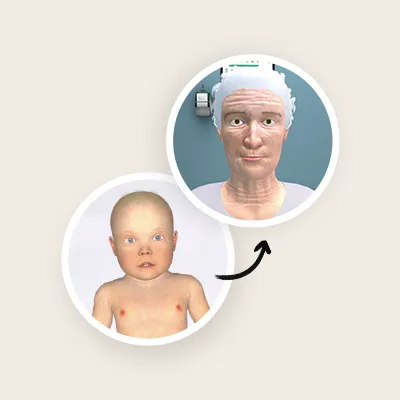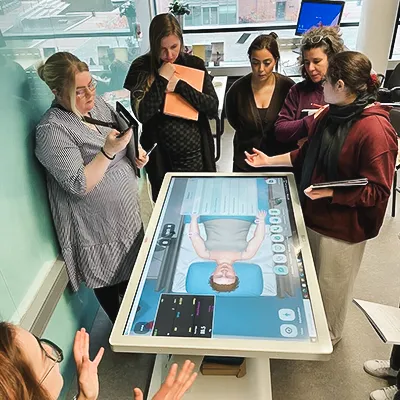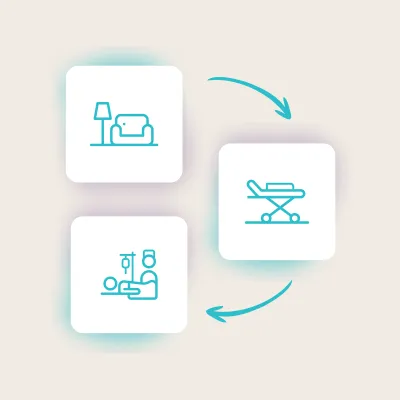Case Study: Enhancing Nursing Skills with Mobile Learning

Recently, Professor Hugrun Ösp Egilsdottir presented her PhD thesis at the University of South-Eastern Norway (USN).
Her thesis delves into the utilization of mobile learning to enhance nursing students’ competence and confidence in performing basic physical assessment skills (PAS).
The following text emerged from an engaging interview with Professor Ösp, during which she had the opportunity to share with us the rationale behind her thesis, the motivations for choosing this topic, and key aspects covered in her research such as the PAS concept, the progression model, and the significance of Body Interact Virtual Patients for the thesis outcomes, among other topics.
It all commences with the PAS in the nursing curricula…
What is PAS and why is it so important?
Physical assessment skills (PAS) are fundamental skills in caring for patients. PAS is utilized by nurses to monitor and evaluate a patient’s clinical situation, identify care needs, and observe changes or deteriorations in patient status over time.
Undoubtedly, PAS is an international component of nursing education and a fundamental skill in nursing care.
Comprising approximately 120 skills, PAS encompasses a comprehensive evaluation of patients from head to toe, making them an integral part of nursing education and practice worldwide.
Aligned with existing literature, Professor Ösp’s research focused on around 30 core PAS, including respiratory, peripheral circulation, abdominal, and neurological assessments. These skills were designated as Basic-PAS (B-PAS) for the purposes of her PhD project.
In addition to a bachelor’s nursing education, the University of South-Eastern Norway offers a Nurse Practitioner education at the master’s level which also focuses on teaching comprehensive and independent use of PAS. An important rationale for tailoring PAS content to bachelor level as B-PAS was to differentiate between these two educational levels. Despite its importance, these skills have not been systematically developed and taught across nursing curricula in the country.
Professor Ösp and her colleagues view B-PAS as an essential component of the nursing role, deserving a prominent place in the curriculum. To address this, they developed the Progression Model, a pedagogical approach aimed at enhancing the development of B-PAS skills.
The Progression Model
A novel instructional approach, known as the ‘Progression Model,’ was developed at USN to enhance students’ acquisition of B-PAS. This model integrates scaffolding and spaced repetition, two fundamental pedagogical principles, to facilitate learning. Unlike traditional methods that concentrate B-PAS instruction within a specific timeframe, the Progression Model adopts a unique approach by spreading out the teaching of these skills across each academic year of nursing education.
The Thesis
Professor Ösp’s doctoral thesis comprises four individual studies, each shedding light on various aspects of nursing students’ self-reported development of competence and confidence in performing B-PAS. Beyond merely assessing the usage frequency of B-PAS among 1st and 2nd year nursing students, Professor Ösp sought to delve deeper into the factors facilitating the implementation of these crucial skills.
- Study I: This mixed-method study aimed to gauge the frequency of B-PAS usage among 1st and 2nd year nursing students.
- Study II: Building upon the findings of Study I, students expressed a desire for access to a digital learning package to aid their understanding of B-PAS. They actively participated in the development and selection process of these resources, which included Body Interact, Massive Open Online Courses (MOOCs), instructional videos, and video lectures.
- Study III: This study sought to evaluate the effectiveness of the digital learning package prepared in Study II. Access to these resources was provided to 2nd and 3rd-year students, who suggested having access to the full spectrum of digital resources to accommodate different learning styles.
- Study IV: A digital clinical practice was designed, with Body Interact Virtual Patients as the primary resource.

Several resources from the digital learning package are currently integrated into the USN nursing curriculum. Notably, Body Interact virtual patients are utilized in the 1st and 2nd years of the nursing curriculum, highlighting the practical implementation of Professor Ösp’s research findings.
Take-home messages
When questioned about the potential contributions of her work, Professor Ösp emphasized several key points:
- The significance of the pedagogical approach embodied in the Progression Model. She believes that this model has broader applicability beyond the context of B-PAS and could be beneficial for teaching other concepts and subjects within nursing education.
- The importance of addressing clinical reasoning and its development with adequate attention. Virtual simulation, such as the use of Body Interact Virtual Patients, offers a conducive environment for students to enhance their clinical reasoning skills.
- The recognition of B-PAS as a critical competency within the broader scope of the nursing role. Professor Ösp underscores the importance of ensuring that nursing students are proficient in these fundamental skills to effectively fulfill their professional responsibilities.
We appreciate Professor Ösp for her aperture to talk with the Body Interact team and in sharing her findings.

Hugrun Ösp Egilsdotti
PhD
Associate Professor
Program coordinator for flexible and decentralized nursing education
Faculty of Health and Social Sciences
Department of Nursing and Health Sciences
University of South-Eastern Norway
References
Egilsdottir, H.Ö., Byermoen, K.R., Moen, A. et al. Revitalizing physical assessment in undergraduate nursing education – what skills are important to learn, and how are these skills applied during clinical rotation? A cohort study. BMC Nurs 18, 41 (2019).
https://doi.org/10.1186/s12912-019-0364-9
Egilsdottir, H.Ö., Heyn, L.G., Brembo, E.A., Byermoen, K.R., Moen, A., & Eide, H. (2021). Configuration of mobile learning tools to support basic physical assessment in nursing education: Longitudinal participatory design approach. JMIR Mhealth & Uhealth, 9(1), e22633.
https://doi.org/10.2196/22633
Egilsdottir, H.Ö., Heyn, L.G., Brembo, E.A., Byermoen, K.R., Falk, R.S., Moen, A., & Eide, H. (2023). Factors associated with changes in students’ self-reported nursing competence after clinical rotations: A quantitative cohort study. BMC Medical Education, 21(107).
https://doi.org/10.1186/s12909-023-04078-7
Egilsdottir, H.Ö., Heyn, L.G., Brembo, E.A., Byermoen, K.R., Moen, A., & Eide, H. (2022). The value of redesigned clinical course during COVID-19 pandemic: An explorative convergent mixed-methods study. BMC Nursing, 21(94).
https://doi.org/10.1186/s12912-022-00872-8









